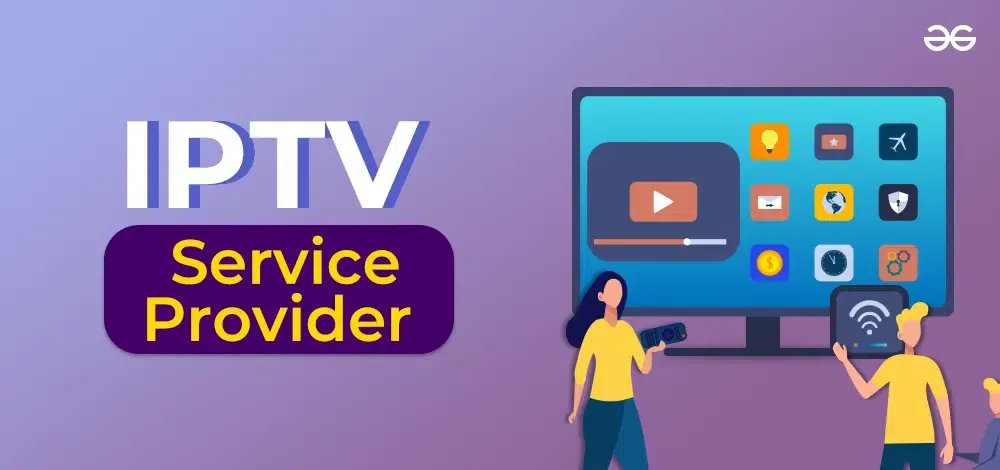Just How IPTV Works: A Step-by-Step Overview to Internet Procedure Television Modern Technology
Net Method Tv (IPTV) has reinvented the means we consume tv content, providing a brand-new realm of possibilities with the power of the web. Comprehending the intricacies of how IPTV works can drop light on the modern technology that drives this innovative form of media delivery. From the fundamental concepts of IPTV to the intricate process of content distribution, each action plays a critical duty in ensuring a smooth viewing experience. In this guide, we will certainly uncover the hidden mechanisms that make IPTV a fascinating fusion of technology and amusement.
IPTV Essentials
In recognizing IPTV essentials, it is crucial to realize the fundamental workings of this technology in supplying tv web content online. IPTV, which represents Internet Protocol Tv, utilizes Net Protocol (IP) networks to send tv web content to individuals' devices. Unlike conventional techniques of relaying television content through wire or satellite signals, IPTV streams media through high-speed internet connections.

Furthermore, IPTV permits interactive abilities, such as video on need (VOD) and electronic program overviews (EPG), improving the user experience by giving even more control and adaptability in accessing material. Generally, recognizing the essentials of IPTV establishes the foundation for discovering its even more advanced functionalities and the benefits it supplies to contemporary tv consumption.
Web Content Delivery Refine
Efficient web content delivery in IPTV systems includes a well-structured procedure that ensures smooth transmission of tv material over IP networks. The web content distribution procedure in IPTV starts with the production of the video clip material, which is after that inscribed right into electronic layout ideal for IP transmission.

Middleware Functionality
With the combination of middleware, IPTV systems gain enhanced functionality that simplifies individual communication and content monitoring. One of the essential functions of middleware in IPTV is check over here to make it possible for individualized customer experiences by giving attributes such as interactive program guides, video-on-demand services, interactive advertising, and individual preferences administration.

Gadget Compatibility
Offered the pivotal duty of middleware in allowing smooth communication and material monitoring in IPTV systems, an important element to think about is the compatibility of tools utilized for accessing the IPTV services. Device compatibility is important for making sure a smooth user experience and optimum performance when accessing IPTV material.
In the context of IPTV, tool compatibility describes the capability of a tool to effectively interact with the IPTV service, show content correctly, and support the necessary methods and codecs for streaming video material online. Various tools, such as wise Televisions, set-top boxes, smart devices, tablets, and computers, may have varying degrees of compatibility with IPTV solutions.
To make certain a seamless hop over to here watching experience, it is essential for users to choose devices that work with the specific IPTV solution they are making use of. Furthermore, IPTV provider must use support for a large range of devices to accommodate the varied requirements of their customer base. By prioritizing gadget compatibility, both individuals and solution suppliers can enhance the general IPTV experience.
High Quality of Service (QoS)
Considering the critical duty of keeping a high standard of performance and integrity in IPTV systems, making sure regular Quality of Solution (QoS) stays a basic aspect of the individual experience. QoS in IPTV refers to the ability of the system to visit homepage deliver content with marginal disturbances, high resolution, and quickly packing times.
Provider use QoS mechanisms such as web traffic prioritization, buffering, and mistake adjustment to preserve a steady IPTV service. By focusing on IPTV web traffic over less time-sensitive information, carriers can guarantee smooth playback also throughout optimal usage hours. Buffering helps make up for network fluctuations, while mistake adjustment methods boost data honesty.
Constant surveillance and optimization of QoS parameters are vital to adjust to changing network problems and user needs. Ultimately, a robust QoS framework is important for supplying a seamless and delightful IPTV experience to customers.
Conclusion
To conclude, IPTV runs with the transmission of tv content over net protocol networks. The modern technology includes a methodical procedure of content shipment, assisted in by middleware functionality to make sure compatibility across numerous gadgets. Top quality of Solution plays a critical function in maintaining the efficiency and integrity of IPTV services. Recognizing the fundamental principles of IPTV is vital for grasping the details of this cutting-edge tv innovation.